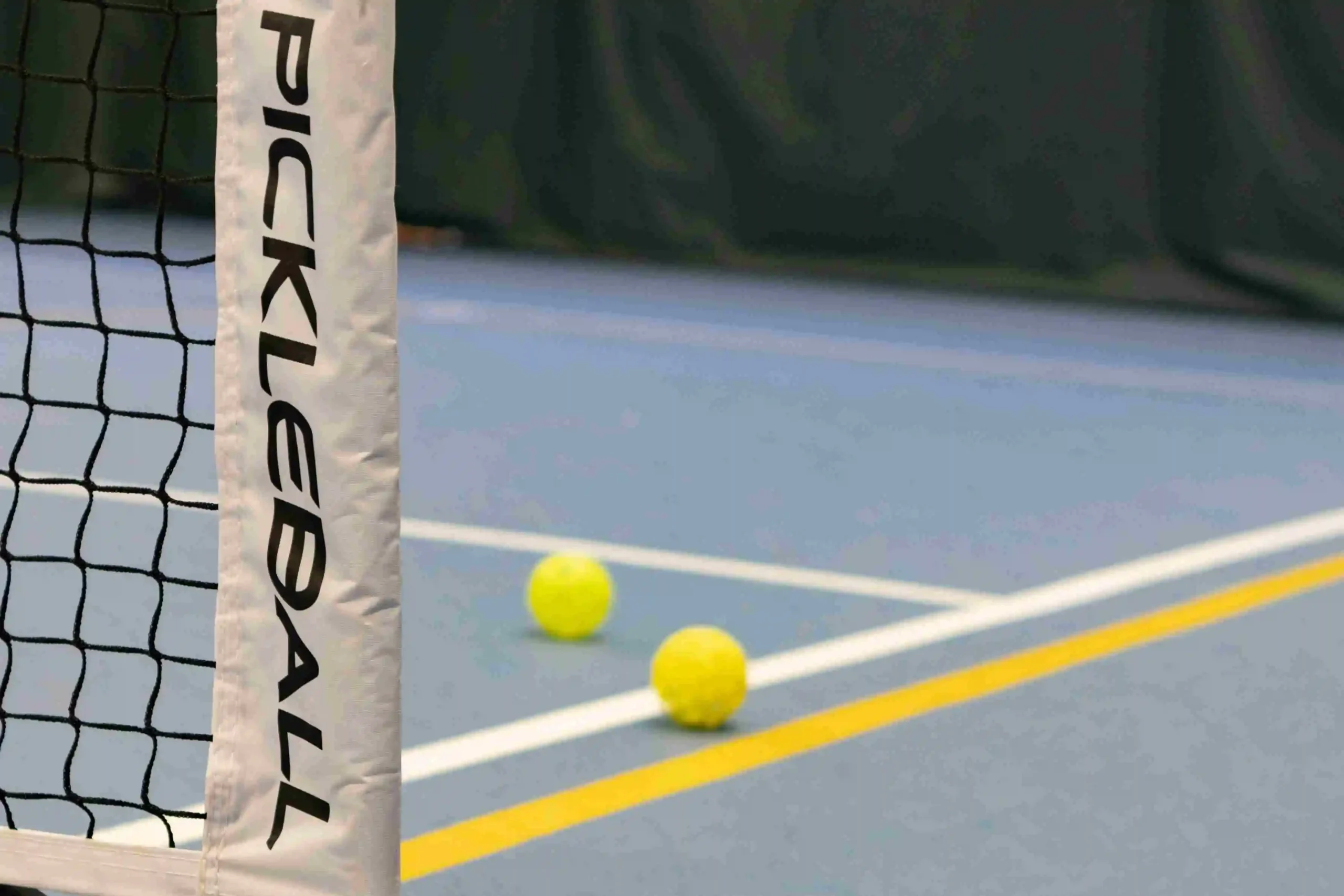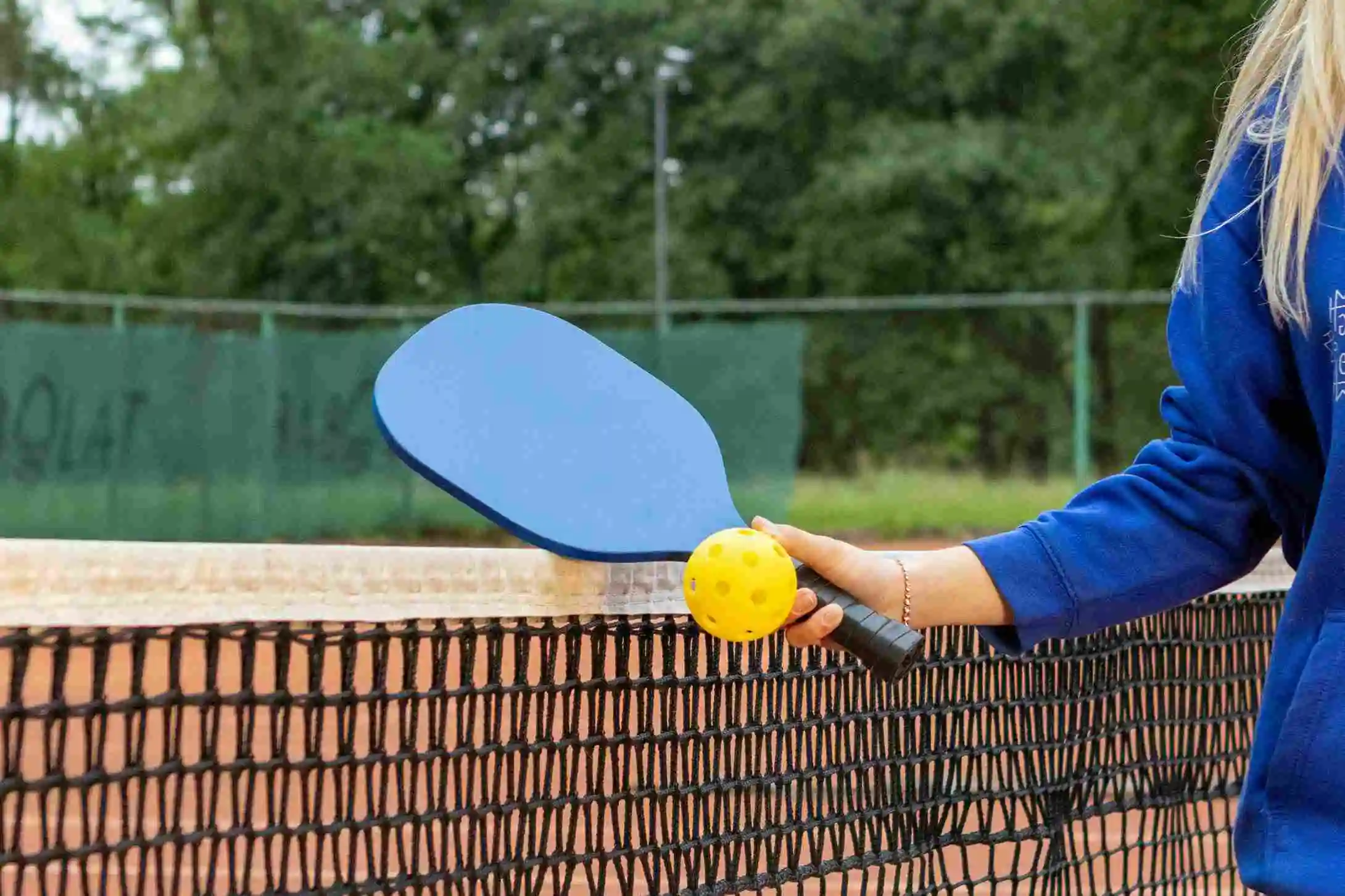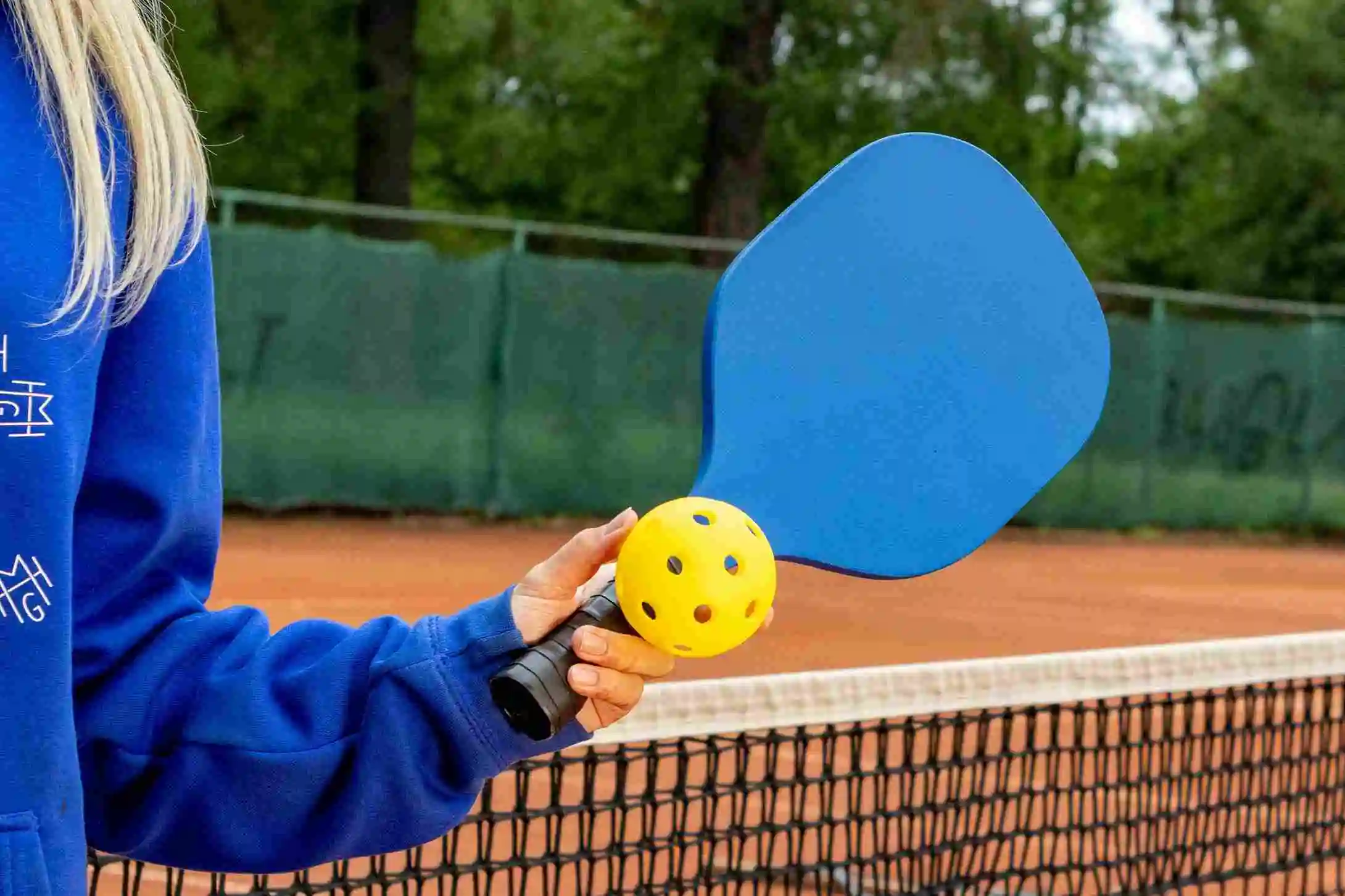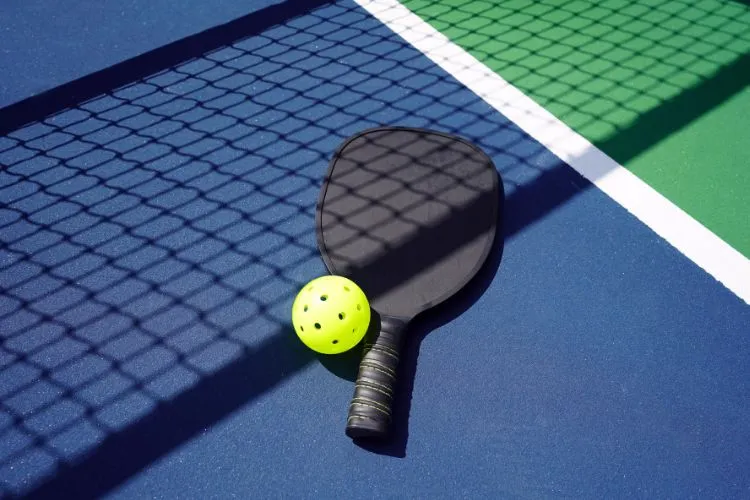Pickleball has surged in popularity, captivating players with its unique blend of tennis, badminton, and ping-pong elements.
As enthusiasts and beginners alike flock to courts around the world, understanding the nuanced rules of the game becomes paramount for competitive and fair play.
Among these, the regulations concerning touching the net in Pickleball stand out for their critical importance in maintaining the integrity of the game. So, can you touch the net In pickleball?
This article seeks to elucidate this aspect, ensuring players are well-informed and equipped to engage in this dynamic sport.

Understanding the Basic Rules of Pickleball
Pickleball traces its origins back more than half a century, conceived as a backyard pastime and evolving into a sport with international competitions. Played on a badminton-sized court with a net slightly lower than tennis’, the game is accessible yet challenging.
It can be played in singles or doubles format, using paddles to hit a plastic ball over the net. The simplicity of the game belies its strategic depth, a quality that has contributed to its growing popularity.
Can You Touch The Net In Pickleball? Explained
The principle is straightforward: players are prohibited from making contact with the net during a playing point. This rule preserves the fairness and flow of the game, ensuring no player gains an advantage or interferes with play through physical contact with the net.

When Touching the Net Is Violation
A rally is considered ongoing from the serve until the ball is dead. During this period, any accidental or intentional contact with the net by a player, their clothing, or equipment results in a fault.
Such incidents usually occur during aggressive plays or attempts to retrieve a close shot. The critical point is that the ball must be in play for a net touch to be penalized, underscoring the need for player vigilance.
Acceptable Scenarios
The rules accommodate scenarios wherein touching the net does not constitute a fault. For instance, after a rally concludes or when the ball is no longer in play, incidental contact with the net is permissible.
Similarly, during serve motions, provided it does not impact the opponent’s opportunity to play the ball, touching the net is allowed. These exceptions account for the dynamics of physical movement, ensuring the game remains competitive but fair.
Special Considerations

Touching Net with Paddle
Queries often arise about whether the paddle is subject to the same restrictions as the player’s body. The rule encapsulates anything a player carries, including the paddle, mandating that it must not touch the net during active play.
This stipulation helps maintain a level playing field, ensuring that neither equipment nor physical advantage can be leveraged to influence the game unduly.
Player’s Body Against the Net
Physical contact with the net, whether leaning, pushing, or accidentally falling into it, disrupts gameplay and is thus penalized. This emphasizes the importance of control and spatial awareness, essential attributes for successful Pickleball players.
The Consequences of Touching the Net
Violating the net rule typically results in the loss of a point or the serve, depending on which side of the infraction. These penalties underscore the rule’s importance, encouraging players to adopt strategies and techniques that mitigate the risk of net contact.
Understanding these consequences fosters a culture of respect for the game’s integrity and the spirit of competition.
Expert Advice to Avoid Net Faults
Positioning and Awareness
Staying aware of one’s position relative to the net is integral to avoiding faults. Players are encouraged to develop a keen sense of their spatial orientation on the court, ensuring they can execute plays without risking a violation.
Regular practice and participation in drills designed to enhance spatial awareness are recommended.
Technique Adjustments
Adapting one’s technique can significantly reduce the likelihood of net contact. Focusing on controlled movements and strokes that prioritize accuracy over power can help maintain a safe distance from the net.
Analyzing videos of professional matches can offer invaluable insights into effective play styles that minimize fault risk.
Pro Tips
Engagement with the broader Pickleball community through clubs or groups can offer practical experience and advice. Additionally, a periodic review of the official rulebook, particularly as updates or clarifications are made, can keep players informed.

Workshops or clinics provide opportunities for hands-on learning and improving one’s game under the guidance of experienced players.
By prioritizing understanding, respect for the game’s rules, and continuous improvement, Pickleball players can enjoy a rewarding and enjoyable sporting experience.
You may also find useful: What is a banger in pickleball? | What is a Foot Fault in Pickleball?
Frequently Asked Questions (FAQs)
u003cstrongu003eIs it ever legal to touch the net in Pickleball?u003c/strongu003e
Yes, but only under certain conditions such as after a rally has ended or when the ball is not in play.
u003cstrongu003eWhat happens if the ball touches the net in Pickleball?u003c/strongu003e
If the ball touches the net during a serve but lands in the appropriate service area, it is considered a u0022letu0022 and the serve is replayed. During regular play, the game continues as normal if the ball touches the net and crosses into the opponent’s court.
u003cstrongu003eCan you touch the net post in Pickleball?u003c/strongu003e
Touching the net post is subject to the same restrictions as touching the net; it is considered a fault if it occurs during active play.
u003cstrongu003eHow do you officially score a point in Pickleball, and what role does the net play?u003c/strongu003e
Points are scored by the serving side when the opponent fails to return the ball in bounds. The net plays a critical role as it is the central obstacle players must navigate, and rules surrounding net contact are designed to ensure fair play.
u003cstrongu003eWhat are common mistakes to avoid related to the net in Pickleball?u003c/strongu003e
Common mistakes include overreaching towards the net, losing track of positioning while focusing on the ball, and accidental paddle contact with the net during aggressive plays.
Conclusion:
A thorough understanding of the rules governing net contact in Pickleball is essential for players aiming to compete at any level. These regulations ensure the sport remains accessible, fair, and competitive, emphasizing skill and strategic acumen over physical dominance.
Adhering to these rules not only promotes personal improvement but also upholds the collective spirit and integrity of the Pickleball community.

Pickleball’s more than a game to me—it’s a passion. I write, sharing its highs and lows, the thrills and the lessons. Some tales might draw you to the court, while others give a hint of the game’s magic. So, curious about my journey? Ready to dive deep into the world of pickleball with me? Let’s go.
